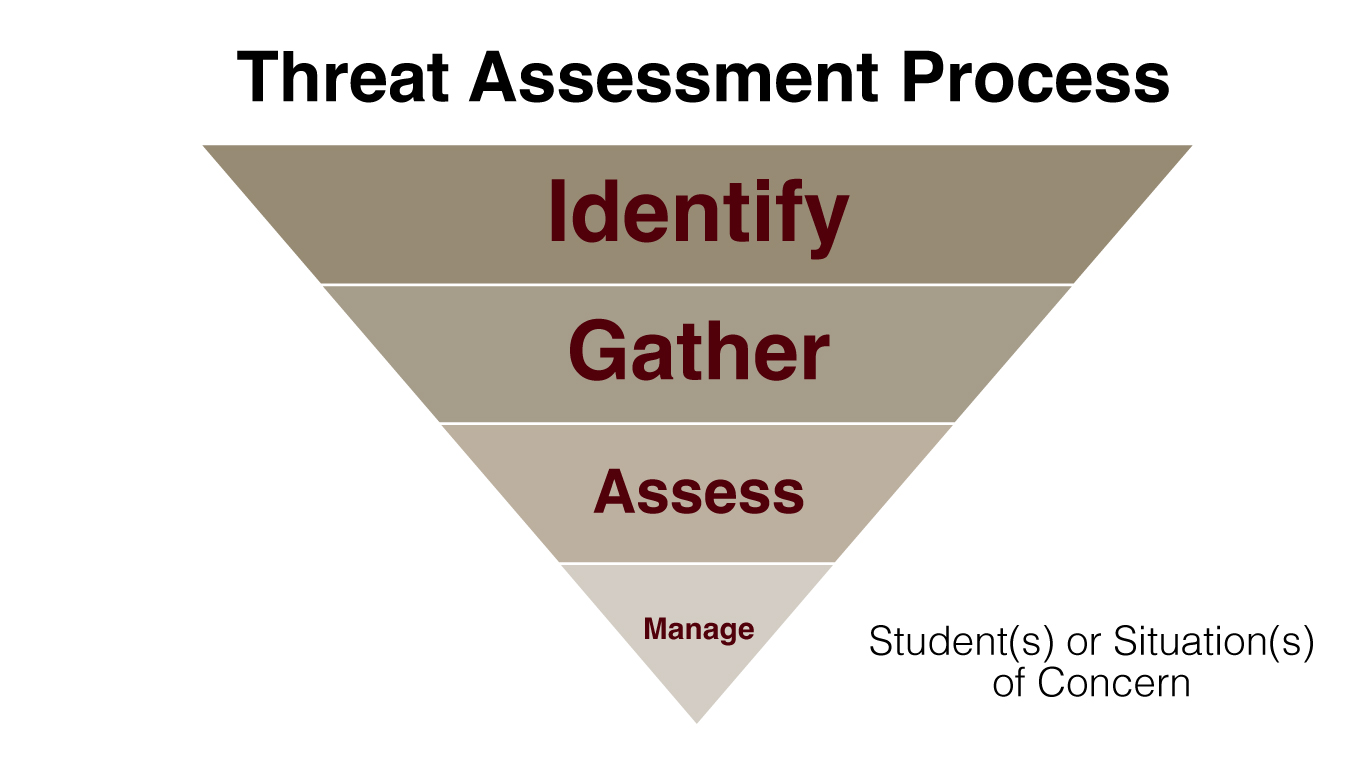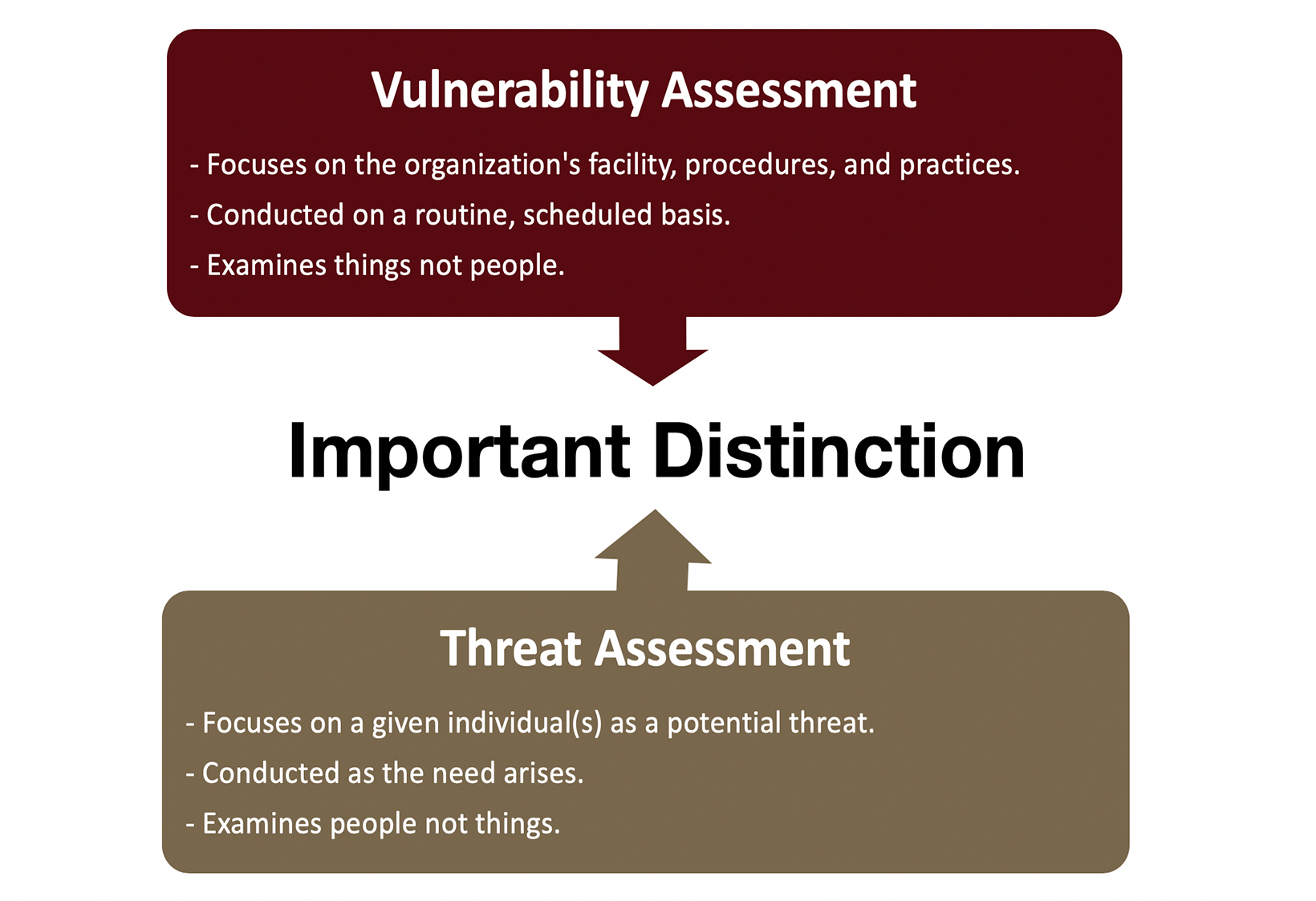TxSSC
School Behavioral Threat Assessment Toolkit
3.0 What is Threat Assessment? What is it NOT?
The first step in creating and implementing the Threat Assessment process in your school is to have a clear idea of the purpose, capabilities, and limitations of threat assessment. In other words, knowing what it IS, and what it IS NOT.
| Threat Assessment IS: | Threat Assessment IS NOT: |
|---|---|
| A fact-based, investigative approach to determine how likely a person is to carry out a threat of violence. (Safe School Initiative Study, 2002) | A simple checklist of warning signs or red flags used to remove a student from school. |
| A means to identify, assess, and manage individuals who are at risk for violence against themselves or others. | A means to label a student as a troublemaker and enact consequences. |
| A way to identify someone who has the potential for violence in many forms - self-harm, assault, risk taking behaviors, suicide, substance abuse, and other aggressive or dangerous behaviors. | A means to find "the next school shooter". |
Threat Assessment is a fact-based, systematic process designed to IDENTIFY, GATHER, ASSESS, and MANAGE potentially dangerous or violent situations. A key goal is to distinguish between an individual who MAKES a threat versus one who POSES a threat.
- Identify the student(s) of concern or the situation(s) that has raised concerns about potential violence.
- Gather additional relevant information about the student(s) of concern or the situation(s).
Note: The focus of threat assessment is to understand the situation and how best to mitigate safety concerns. It is not the same as a criminal or disciplinary investigative process. - Assess the student(s) of concern or the situation(s) based on the totality of the information that is reasonably available to determine whether the student or situation poses a threat of violence.
- Manage the student(s) of concern or the situation(s) by implementing an intervention, supervision, or monitoring plan to prevent harm where possible and to reduce or mitigate impact of the situation.

Threatening and other disturbing behavior can come in a variety of forms. A threat may be:
- Expressed or communicated verbally, behaviorally, visually, in writing, electronically, or through other means.
- Expressed directly or indirectly.
- Issued by someone known or unknown to the target.
Threat Assessment teams and programs are designed to address any behavior or communication that raises concern that a person or situation may pose a danger to the safety of the school, campus, or workplace.
Now that we’ve briefly examined what threat assessment is, let’s identify what it is not. Threat assessment is not a simple checklist of warning signs or red flags that an administrator or school counselor completes based on a single threat or incident. Threat assessment examines the whole picture, not just an isolated event. The use of threat assessment principles is not a means to kick kids out of school or label them as troublemakers, but instead to craft a plan for effectively intervening and managing the individual.
Perhaps most importantly, threat assessment is not just about “finding the next school shooter”. It goes far beyond just that single purpose. Threat assessment can assist schools in identifying and intervening with a wide range of troubling or potentially violent situations.

It is also important to understand the distinction between threat assessments and vulnerability assessments as these terms are often used interchangeably and incorrectly. A vulnerability assessment (sometimes called a site survey or security audit) deals with things, not people. It focuses on the facility, policies, and procedures, not individuals. A vulnerability assessment should be scheduled and conducted on a periodic basis to examine the security of the physical plant, the daily operational practices, and to detect potential vulnerabilities or risks.
In Texas, the education code TEC 37.108(b) states:
More information on safety and security audits can be found in the Texas School Safety Center’s School Safety and Security Audit Toolkit.
A threat assessment, on the other hand, is about people - individuals of concern and their behavior. It cannot be scheduled, but rather must occur whenever a threat is received, or troubling behavior is observed. A threat assessment focuses on a specific individual, the threats they have made or pose, and the development of a plan for management. While vulnerability assessments and threat assessment management have different purposes and mechanisms, both are critical to ensure a safer school.